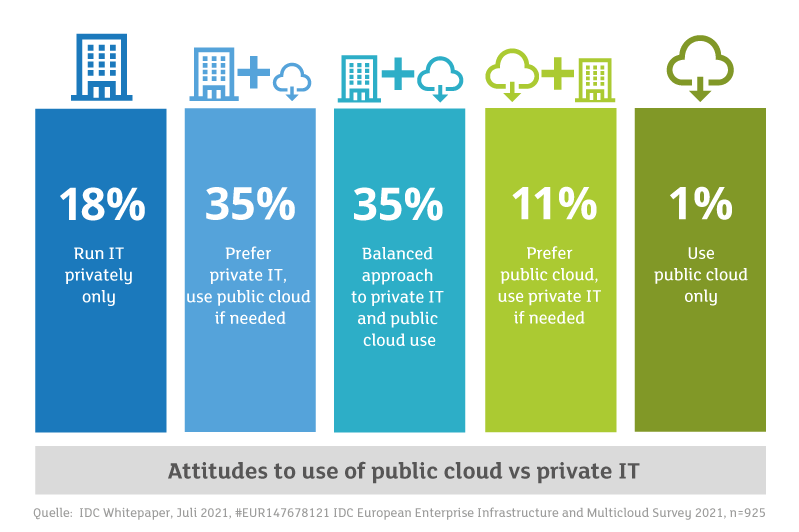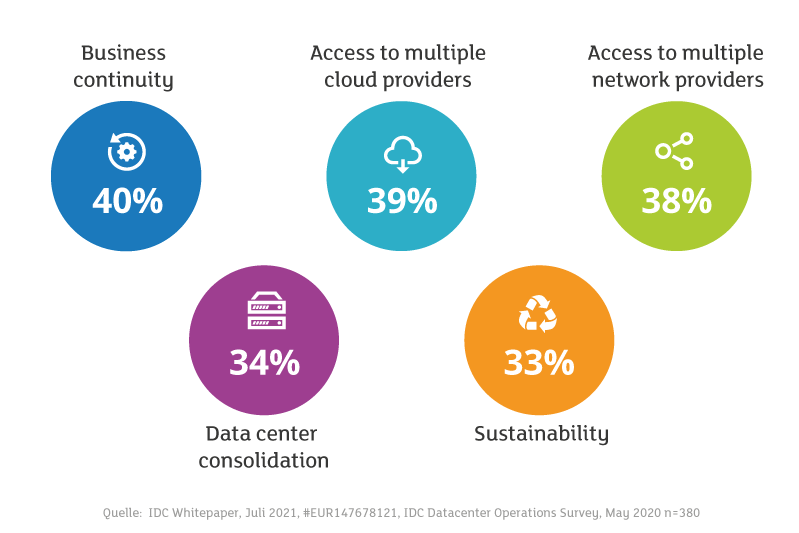
CIOs and the dilemma of digital innovation vs. cost pressure
Today, more than ever, businesses are built to operate around information technologies. This requires applications and data to be accessible, anywhere, anytime. With this development, the role of the CIO has evolved over the years: instead of just managing infrastructure and resources, the CIO has become the business enabler and innovation driver of their organization. They are ultimately responsible for what is arguably the asset most critical to a company’s success: data and IT systems.
Given their increased responsibility, CIOs face challenges on several fronts. First, they are required to manage modern IT infrastructures that comply with all regulatory rules and industry standards while also meeting the demands of business managers. In addition, they are under enormous pressure to cut costs, while existing infrastructures are barely able to offer the necessary degree of flexibility.
| Learn more about how on-premises data centers can be phased out. Call us: +41 56 460 23 80 |
How a company’s own data center can be a barrier
The weak spot in the mission-critical infrastructure of many companies is often their actual core: their own data center. In many cases, state-of-the-art operation is almost impossible, and expanding – or downsizing – the location is no longer economically viable. Many data centers have come to the end of their life cycle, are non-sustainable and, in terms of security, are outdated. At the same time, they offer no agility and only limited scope to capitalize on the benefits of the cloud. Aging data centers resemble isolated entities rather than highly networked data hubs.
| Have you planned your data center exit strategy? If a company’s own data center isn’t providing the flexibility needed and is still costing the business a lot of money and effort, it’s time for a paradigm shift. Find out more. |
Hybrid architecture fast-tracks the data center exit strategy
To drive digital innovation, tackle business needs efficiently and develop new business models, companies are turning to hybrid architectures. The IDC’s latest European enterprise and multi-cloud study shows that 81 percent of respondents are using this hybrid model, which combines their own data center with infrastructures in a commercial data center and encompasses private and public cloud elements. Just one percent of enterprises surveyed reported using the public cloud exclusively, with 18 percent operating it privately.

To ensure this hybrid approach leads to modern service delivery, integrated data centers need to deliver a lot more in terms of flexibility, connectivity and cost structure than is typically offered by in-house data centers. They have to:
- offer flexible housing that accommodates performance and space requirements for legacy systems and private clouds, and that can up- or downsize as required;
- ensure comprehensive, high-performance and secure networking with cloud providers and other technology partners via the shortest possible routes;
- offer a cost model similar to the pay-as-you-use model of the cloud instead of generating high fixed costs;
- ultimately also provide storage capabilities in close proximity to the cloud providers’ data locations so as to reduce connectivity costs.
Instead of companies investing resources in cutting technical debt and upgrading their own systems, it pays off to rely on data center providers that already meet all these criteria.
| Learn more about how we support your Cloud Journey. Call us: +41 56 460 23 80 |
The five most important reasons to migrate to a data center provider
State-of-the-art data centers from specialist providers are the ideal way to support digital transformation. Respondents in the global IDC data center operations survey said these five criteria played a key role in choosing a data center provider:

Companies are increasingly going digital and need an agile digital base to boost their innovative capacity. Only advanced data centers from specialized providers are able to meet these demands, as they invest in further development, energy efficiency and excellent networking on an ongoing basis.
| The moment has now arrived for CIOs to get prepared and expand their IT infrastructure to meet the requirements of a customer-oriented and data-driven business. It is time to consider a data center exit strategy. |
